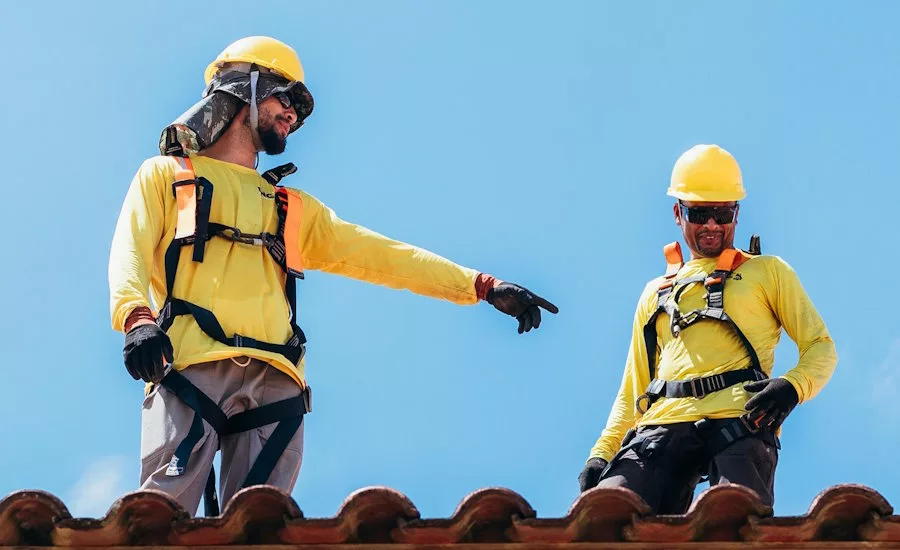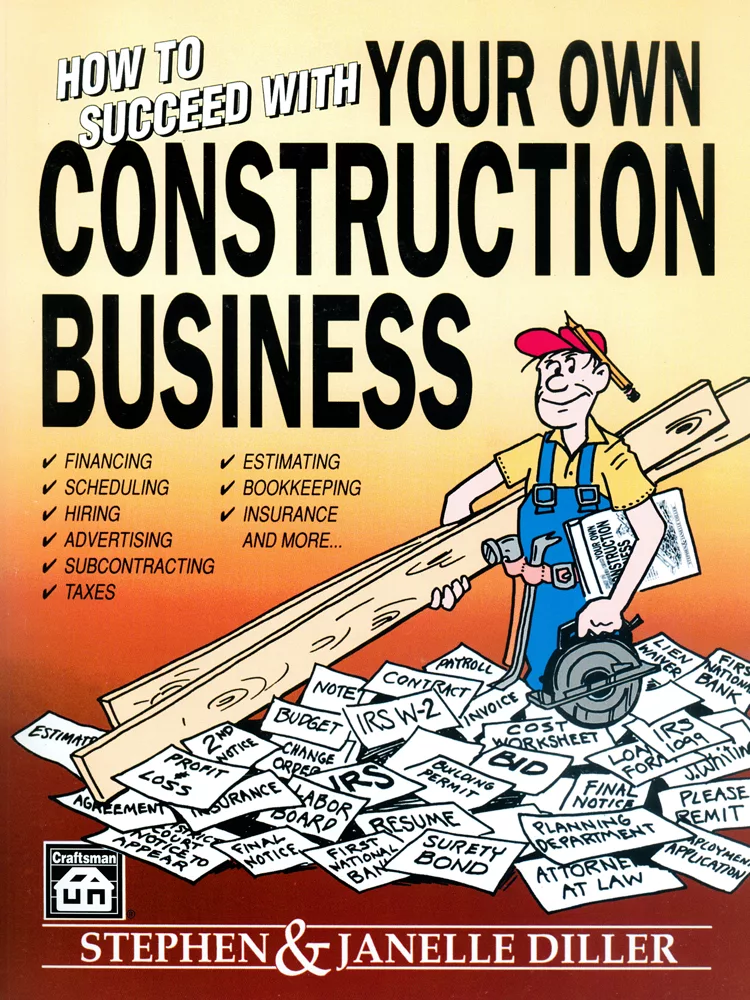Success With Hispanics: Safety Training That Works With Latinos
Let’s face it; more Latinos are getting hurt on the job than is necessary or appropriate. I have frequently cited an Associated Press study documenting that for the Latino worker, safety accident rates are four times that of Anglos. (Some studies have put the ratio as high as 8:1.) Many companies struggle with the actual development and implementation of a safety program, while others struggle with the actual nuts and bolts of teaching safety to people from another culture.

Let’s face it; more Latinos are getting hurt on the job than is necessary or appropriate. I have frequently cited an Associated Press study documenting that for the Latino worker, safety accident rates are four times that of Anglos. (Some studies have put the ratio as high as 8:1.) Many companies struggle with the actual development and implementation of a safety program, while others struggle with the actual nuts and bolts of teaching safety to people from another culture.
In this two-part series, I would like to address both of these areas. This article will focus on the actual implementation of a safety program with Latinos and the elements necessary for success. My next article will focus on the specific cultural mindsets and nuances you must be aware of in order to properly train Latinos when it comes to safety. In this article, I’m going to set the foundation for a solid Latino safety training program. I would like to address three areas of thought:
The first and foremost law of teaching and learning states that you must learn something you don’t know through something you do know. In the real world, this means you must develop training programs and processes that first develop understanding, then, based on proper understanding, develop skill. You must teach people in agreement with their ability to learn and always with a clear reference to what they already know.
Training is not handing someone a copy of the employee manual. Training is not sticking a new employee with another employee on the first day and saying, “go learn with Manuel.” This is not training. Training is actually making sure a person understands things in a way that he can mentally grasp. It then allows the learner to take that understanding and actually apply to the real world. This is training.
Let’s face it - a lot of Latino laborers come from low socioeconomic backgrounds, and this affects the way they learn. You cannot expect a person with a seventh-grade education to learn in the same way a person with a college degree learns. They may both be wonderful people, but they do not learn in the same way, nor do they have the same base of knowledge. When you create a training program, you must consider class, as this will affect your approach to teaching and learning.
People from different Spanish-speaking countries are different. Puerto Ricans are not Mexicans, Mexicans are not Colombians, Colombians are not Dominicans, Dominicans are not Hondurans, etc. We all speak the same language, but we have different ways of thinking and viewing life. The way people think affects the way people learn. All great trainers make adjustments based on these factors.
Some people are safety-oriented; others are not. It is hard to create a “committed” person to safety after the fact. It is always better to hire people who show they are committed to safety. Companies consistently try to create commitment from people who, by nature, are not very committed to safety. They have incentive programs, bonuses, public recognition, big signs noting days without a lost-time accident, etc. This is a band-aid and never really solves the real problem.
The real problem is hiring people who are not safety minded. In many cases, employees actually enjoy the rush of a risky situation. Many Latinos, men especially, do have a “macho” mentality and, let’s be honest here, are not concerned about taking a lot of safety precautions.
My advice has always been, and will always be, to hire people who actually care about being safe. You can figure out ways to test this before hiring someone. You can note their level of personal neatness, care, hygiene, etc. If a person comes streaking into your parking lot in their car or truck for their job interview, you may just have your first indicator that this person likes life in the fast lane.
You are smart enough to structure questions and conversations to get a feel for a job applicant’s personality. Legend has it that Henry Ford, when recruiting a future executive, would always take them out for dinner. He had a standard rule that if a person put salt on their food before tasting their food that he would not hire them. He reasoned that if the person made that decision before tasting their food first, then most likely they would not take their time studying different options before making a business decision either.
It is very, very easy to train safety to people who are already committed to neatness and personal care. Your job is to hire those people. These are the ones who will take safety seriously on the job. These are the ones who will keep the jobsite clean. The basis of all great safety training programs is hiring people who care about safety in the first place.
Here are the three C’s you should always keep in mind as you develop and maintain a safety program:
Remember that your main obligation as a roofing contractor is to make sure that your employees are able to go home to their families in the evening. This is your main responsibility. You certainly don’t want to live with an avoidable serious injury or a death on your conscience. I have heard all the excuses for not doing safety training, but they are just that - excuses. Make a commitment today to be consistent in your safety training.
If you are consistent at doing something, it starts to become compelling just by the very nature of repetition. Very few things compel people to action or change in one event. People may get motivated at one event or meeting, but they cannot sustain that motivation. For safety training to be compelling, it must be consistent. This is the only way to imbed the importance of safety on the mind of your workers.
This may surprise you, but you are mistaken if you believe that financial bonuses or donuts on Friday if there are no accidents are compelling reasons to stay safe on the job. Safety is a mindset. It is not bought. You cannot bribe someone into a mentality. It is consistently modeled and taught. It is compelling. The message of safety is communicated in a language and with a heart the people can understand. There is nothing compelling about hearing some person with no speaking skills and no passion translate a monthly safety message from English to Spanish. In fact, this is the opposite of compelling! It would upset me that I have my life on the line every day on the roof and my company doesn’t care enough to properly teach me how to stay safe on the job.
The things that compel me in life are those that matter to me personally. I cannot believe how many programs pass for training that do not consider a person’s life in context or culture. This is just silly. To get more details on these specific contextual and cultural elements that can take your safety program to the next level with Latinos, please read my next article.
We never forget what we do with passion and emotion. Never. In training, the fastest way to make something emotional is to tie it to the things that create emotion in your people. These things, for your Latinos, are family and country. Every training program you develop should somehow weave in the elements of love of family and country. This just takes a bit of creativity, but if you can do it, the results will be outstanding.
So, ask yourself this question. Is my training program for my employees presented in the context of their culture? Is it consistent? Compelling? Contextual?
Is it?

Let’s face it; more Latinos are getting hurt on the job than is necessary or appropriate. I have frequently cited an Associated Press study documenting that for the Latino worker, safety accident rates are four times that of Anglos. (Some studies have put the ratio as high as 8:1.) Many companies struggle with the actual development and implementation of a safety program, while others struggle with the actual nuts and bolts of teaching safety to people from another culture.
In this two-part series, I would like to address both of these areas. This article will focus on the actual implementation of a safety program with Latinos and the elements necessary for success. My next article will focus on the specific cultural mindsets and nuances you must be aware of in order to properly train Latinos when it comes to safety. In this article, I’m going to set the foundation for a solid Latino safety training program. I would like to address three areas of thought:
- What training is and what it does.
- Things to consider in Latino safety programs.
- The three C’s of safety training.
What Training Is and Does
One of the main reasons why most training programs fail is because they are simply not developed around functional laws of teaching and learning. In other words, the instructors don’t teach well, thus the people don’t learn well.The first and foremost law of teaching and learning states that you must learn something you don’t know through something you do know. In the real world, this means you must develop training programs and processes that first develop understanding, then, based on proper understanding, develop skill. You must teach people in agreement with their ability to learn and always with a clear reference to what they already know.
Training is not handing someone a copy of the employee manual. Training is not sticking a new employee with another employee on the first day and saying, “go learn with Manuel.” This is not training. Training is actually making sure a person understands things in a way that he can mentally grasp. It then allows the learner to take that understanding and actually apply to the real world. This is training.
Important Factors to Consider
This is all predicated on the first point, and that is you must train people based on what they already know. You have to help them gain understanding and then move them to application. When training Latino workers you must consider then, three important elements that affect the way they learn and filter information. These three factors are class, country and commitment.Let’s face it - a lot of Latino laborers come from low socioeconomic backgrounds, and this affects the way they learn. You cannot expect a person with a seventh-grade education to learn in the same way a person with a college degree learns. They may both be wonderful people, but they do not learn in the same way, nor do they have the same base of knowledge. When you create a training program, you must consider class, as this will affect your approach to teaching and learning.
People from different Spanish-speaking countries are different. Puerto Ricans are not Mexicans, Mexicans are not Colombians, Colombians are not Dominicans, Dominicans are not Hondurans, etc. We all speak the same language, but we have different ways of thinking and viewing life. The way people think affects the way people learn. All great trainers make adjustments based on these factors.
Some people are safety-oriented; others are not. It is hard to create a “committed” person to safety after the fact. It is always better to hire people who show they are committed to safety. Companies consistently try to create commitment from people who, by nature, are not very committed to safety. They have incentive programs, bonuses, public recognition, big signs noting days without a lost-time accident, etc. This is a band-aid and never really solves the real problem.
The real problem is hiring people who are not safety minded. In many cases, employees actually enjoy the rush of a risky situation. Many Latinos, men especially, do have a “macho” mentality and, let’s be honest here, are not concerned about taking a lot of safety precautions.
My advice has always been, and will always be, to hire people who actually care about being safe. You can figure out ways to test this before hiring someone. You can note their level of personal neatness, care, hygiene, etc. If a person comes streaking into your parking lot in their car or truck for their job interview, you may just have your first indicator that this person likes life in the fast lane.
You are smart enough to structure questions and conversations to get a feel for a job applicant’s personality. Legend has it that Henry Ford, when recruiting a future executive, would always take them out for dinner. He had a standard rule that if a person put salt on their food before tasting their food that he would not hire them. He reasoned that if the person made that decision before tasting their food first, then most likely they would not take their time studying different options before making a business decision either.
It is very, very easy to train safety to people who are already committed to neatness and personal care. Your job is to hire those people. These are the ones who will take safety seriously on the job. These are the ones who will keep the jobsite clean. The basis of all great safety training programs is hiring people who care about safety in the first place.
The Three C's of Safety Training
You can tell I like to group things in groups of threes. This is a very solid training technique. You know, as simple as one, two, three (or, tan simple como uno, dos, tres .)Here are the three C’s you should always keep in mind as you develop and maintain a safety program:
- Consistent.
- Compelling.
- Contextual.
Remember that your main obligation as a roofing contractor is to make sure that your employees are able to go home to their families in the evening. This is your main responsibility. You certainly don’t want to live with an avoidable serious injury or a death on your conscience. I have heard all the excuses for not doing safety training, but they are just that - excuses. Make a commitment today to be consistent in your safety training.
If you are consistent at doing something, it starts to become compelling just by the very nature of repetition. Very few things compel people to action or change in one event. People may get motivated at one event or meeting, but they cannot sustain that motivation. For safety training to be compelling, it must be consistent. This is the only way to imbed the importance of safety on the mind of your workers.
This may surprise you, but you are mistaken if you believe that financial bonuses or donuts on Friday if there are no accidents are compelling reasons to stay safe on the job. Safety is a mindset. It is not bought. You cannot bribe someone into a mentality. It is consistently modeled and taught. It is compelling. The message of safety is communicated in a language and with a heart the people can understand. There is nothing compelling about hearing some person with no speaking skills and no passion translate a monthly safety message from English to Spanish. In fact, this is the opposite of compelling! It would upset me that I have my life on the line every day on the roof and my company doesn’t care enough to properly teach me how to stay safe on the job.
The things that compel me in life are those that matter to me personally. I cannot believe how many programs pass for training that do not consider a person’s life in context or culture. This is just silly. To get more details on these specific contextual and cultural elements that can take your safety program to the next level with Latinos, please read my next article.
We never forget what we do with passion and emotion. Never. In training, the fastest way to make something emotional is to tie it to the things that create emotion in your people. These things, for your Latinos, are family and country. Every training program you develop should somehow weave in the elements of love of family and country. This just takes a bit of creativity, but if you can do it, the results will be outstanding.
So, ask yourself this question. Is my training program for my employees presented in the context of their culture? Is it consistent? Compelling? Contextual?
Is it?
Looking for a reprint of this article?
From high-res PDFs to custom plaques, order your copy today!




